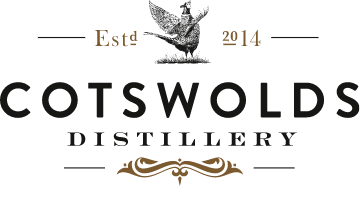Single Malt vs Blended Whisky: Which is Better?
Whisky aficionados and newcomers alike are often faced with a key question: single malt or blended whisky? Each type holds a cherished spot in whisky history, boasting distinct flavours, traditions, and craftsmanship. Single malt whisky, a product of a single distillery using malted barley, is prized for its purity, resulting in a rich, complex profile. Blended whisky, on the other hand, showcases the artistry of combining multiple whiskies, from different producers, achieving balance and accessibility with smooth, harmonious notes. In this guide, we’ll delve into the defining characteristics of each, exploring the nuances and helping you decide which is best suited for you.
A word from our experts:
“Single malt whisky wouldn’t be here without blended whisky...
...It’s just something that tastes good and can be paired with delicious things – don't be scared to make yourself a whisky pina colada”
- Rob Patchett, Whisky Ambassador at Cotswolds Distillery
Key highlights
- Single malt whisky is made from malted barley at a single distillery, resulting in a complex and distinctive flavour profile
- Blended whisky is a combination of different whiskies, often from multiple distilleries, creating a smoother and more accessible taste.
- Single malt whisky is generally more expensive due to the time-consuming and resource-intensive production process, as well as a high demand for quality spirit.
- Both single malt and blended whiskies have their own unique qualities and can be enjoyed in various ways, either neat or in cocktails.
- While single malt is often considered superior due to its purity and depth, blended whisky offers a more affordable and approachable option.

Understanding Whisky Types
What is Single Malt Whisky?
Single malt whisky is crafted exclusively at a single distillery using only malted barley, aged for at least three years in oak. Single malt embodies a rich depth of flavour and heritage. It undergoes a meticulous production process, typically distilled in copper pot stills, which facilitates robust and unctuous flavours that reflect the unique qualities of each distillery and the ingredients. Ageing in oak casks further enhances its character, with each barrel adding distinct notes varying from fruit, baking spices, smoke and toffee. However, single malt can differ from single cask whisky as it permits blending between different barrels.
What is Blended Whisky?
Blended whisky is a harmonious mix, often combining multiple single malts; some producers blend single grain whiskies into the mix. The art of blending allows distillers to achieve balance and consistency. However, excessive blending can be a one-way street towards diminishing a single malt’s distinct characteristics, although the result is a smoother, milder profile that can appeal to a wider audience. Blended whiskies can vary from light and floral to bold and smoky. The versatility and accessibility of blends make them ideal for cocktails and mixers.
The Art of Whisky Making: The Difference Between Single Malt and Blends

How is Single Malt Produced?
Single malt whisky production follows a time-honoured tradition. The malted (germinated and dried) barley is mashed, fermented, and then distilled in copper pot stills. Batch distillation allows more flavour compounds, such as fatty acids and esters, into the heart cut – the distillate only reaches around 50% ABV after a single distillation. Single malt is typically distilled twice to compromise purity and flavour.
The whisky matures in oak casks, absorbing new character from the wood. Depending on the type of barrels used (the seasoning from liquid previously aged within them - commonly wine, Sherry or Bourbon), they impart nuanced flavour profiles ranging from stewed fruit to buttered toast. The care and precision involved in each step give single malt its revered status among whisky enthusiasts. Quality, consistency and robust, distinct flavour profiles make single malt arguably the most desirable of any category.
Skilled blenders create the perfect harmony by blending single malts aged in different barrels.
How is Blended Malt Whisky Produced?
While single malt production is viewed as the most precise, there is certainly a valuable and unique skill set involved in creating a top-shelf blended malt whisky. The process requires a master blender to select and combine whiskies from different independent sources to achieve a balanced profile. Many producers blend single malt whiskies of varying ages and characteristics, resulting in a nuanced, layered expression. Blended malt whiskies showcase the creativity of the blender, who harmonises diverse flavours into a unified experience.
The whiskies selected for the blended malt are mixed in a vat – called vatted malts – before being returned to barrels to ‘marry’. Blended malt whiskies have to be produced using only whiskies made exclusively using malted barley. Meanwhile, some exceptional offerings blend grain whisky with malt whisky. Coffey stills (column stills) and continuous distillation are usually preferred for grain whiskies, resulting in smoother, purer spirit. There are so many exciting variations in whisky production, particularly in the New World category.
Why Does Single Malt Whisky Cost More?
Single malt whisky tends to be more expensive due to the resource and labour-intensive process of producing an exceptional-quality product. Malting, maturation and completing multiple batch distillations also require additional resources and time. Secondly, single-barrel expressions and limited-edition styles warrant a premium price tag due to high demand and relatively low availability.
Blended whisky, on the other hand, benefits from combining various malt and grain whiskies, often allowing for larger production volumes and a more accessible price point. You can find outstanding blended whisky, but the category gets a bad reputation because there’s no shortage of mass-produced blends available.
The Best Blended and Single Malt Whiskies to Try
If you’ve ever knocked blended whisky, we demand you try this double malt whisky (just 2 single malt whiskies blended together) - it has so much to offer. Without risking muted flavour profiles, Milk & Honey Distillery and Cotswolds Distillery beautifully balance an inviting nose of cinnamon, butterscotch and toffee with a soft, fig, pear and coconut palate. Experience red fruits on the finish. It’s totally distinct while being effortlessly approachable. It blends whisky from ex-Bourbon and ex-Sherry casks for the ultimate harmony.
The Bourbon cask single malt whiskyt is an excellent alternative for the double malt if you’d prefer a single distillery expression. While both share a similar style, each has unique flavours to offer.
The Signature Single Malt from Cotswolds Distillery is popular for its bold flavours, yet accessible profile. It has been brought to life entirely in the Cotswolds – barley farming, fermentation, distillation and maturation all occur in this small but dynamic area of the southern English countryside.
“If you’re making a whisky that you want to drink, you want to make sure every element is done with credibility, and that’s what the signature is - there are no corners cut. It’s absolutely outstanding and the way whisky should be.”
- Rob Patchett, Whisky Ambassador at Cotswolds Distillery
While the adored signature single malt is a “Swiss army knife” of whisky, you may prefer something sweeter, such as the Hearts & Crafts Pineau de Charentes. It offers sweet, almost dried fruit, baking spices and summer berries characteristic of the sweet dessert wine aged prior. Explore our limited edition whisky.

Is Single Malt Better than Blended?
Single malt whisky is often considered superior to a blend of whiskies due to its depth of flavour, consistency and quality. Produced exclusively at a single distillery with 100% malted barley, single malts capture the unique characteristics of their origins, from the choice of barley and water source to the specific distillation process and ageing methods. Each bottle showcases the distillery's craftsmanship and the nuances imparted by time spent in oak barrels.
Meanwhile, blended whisky can offer accessible, smooth and balanced profiles ideal for novice drinkers and cocktail making, single malts are celebrated for their layered complexity, distinctive flavours, and the artisanal skill that goes into creating each batch.
Shop Cotswolds Single Malt Whisky
Frequently Asked Questions
Is Age a Factor in Choosing Between Single Malt and Blended?
Yes, age can influence the complexity and flavour profile of both single malt and blended whisky – the age of a blend is only as old as the youngest spirit. Older whiskies often develop deeper, more intricate flavours due to prolonged ageing. However, warmer climates such as the Cotswolds facilitate richer flavours at a younger age. It’s a common misconception that older whiskies are always better.
Can I Mix Single Malt or Blended Whisky in Cocktails?
While single malt is often enjoyed neat to appreciate the distinct flavour profile, it can be excellent in an old fashioned, a whisky sour or a Manhattan – Explore our other cocktails. Blended whiskies, with their smooth and versatile profile, are especially popular for mixed drinks, providing a balanced base that complements other ingredients without overpowering them.
Is Single Malt Higher Quality?
Single malt whisky is often revered for its purity and depth, representing the distinct character of a single distillery. Blended whiskies can offer quality and consistency but if you want to try something truly exceptional, choose a single malt.
Is Single Malt Scotch the Best Whisky?
While Scotland is known for its output of high-quality single malt scotch and blended scotch whisky, there is so much on offer outside of the world of Scotch Whisky. The Scotch Whisky Association imposes strict rules on production, which prohibit some types of barrels
What to read next
Understanding English Whisky – What is Single Malt?
Single Malt vs Single Grain: What’s the Difference?



